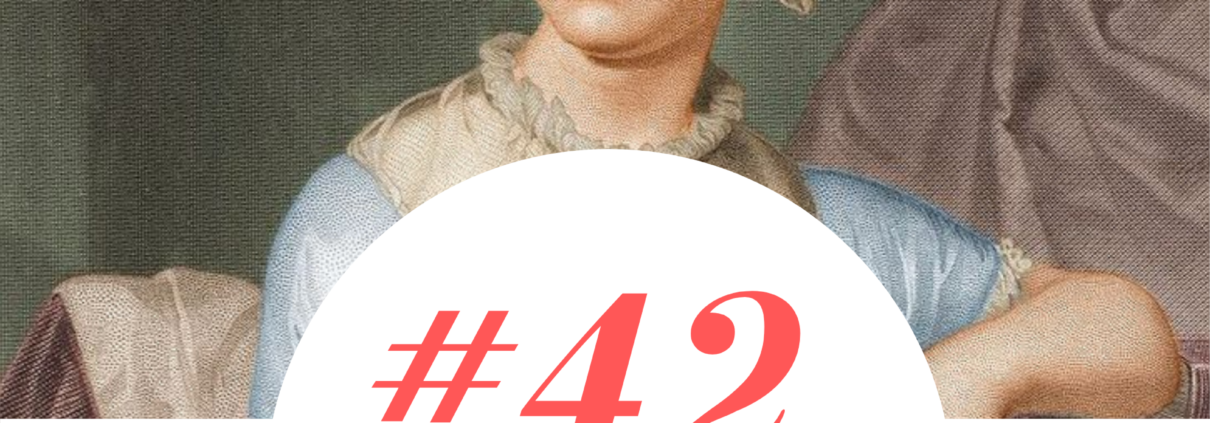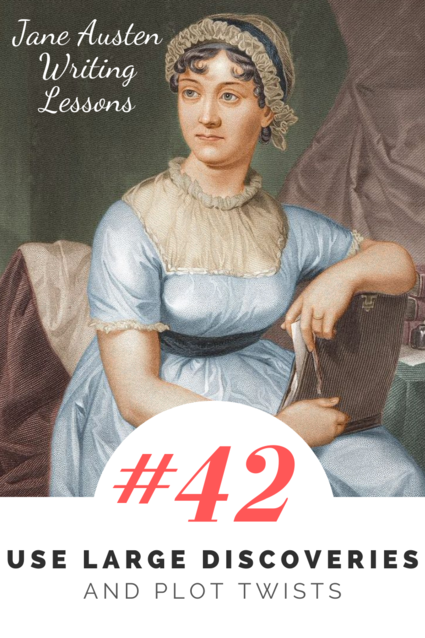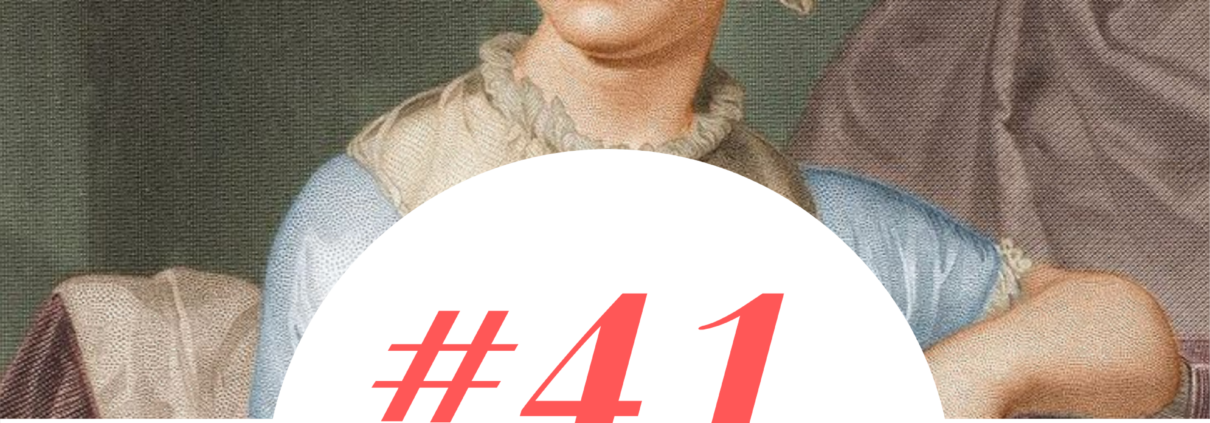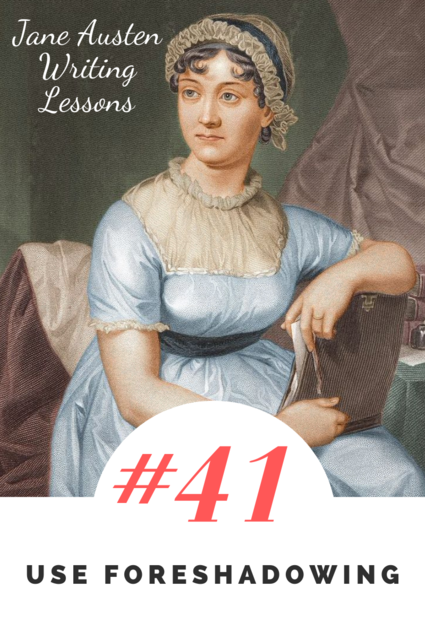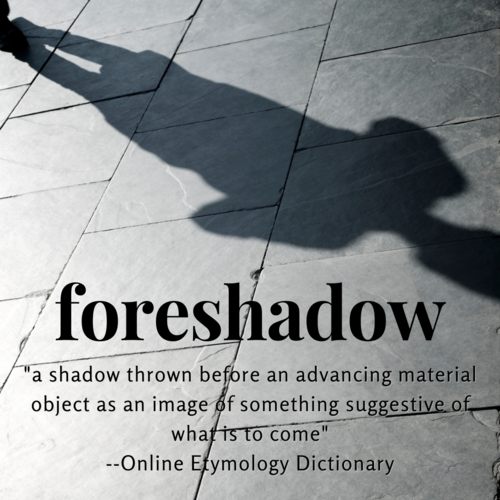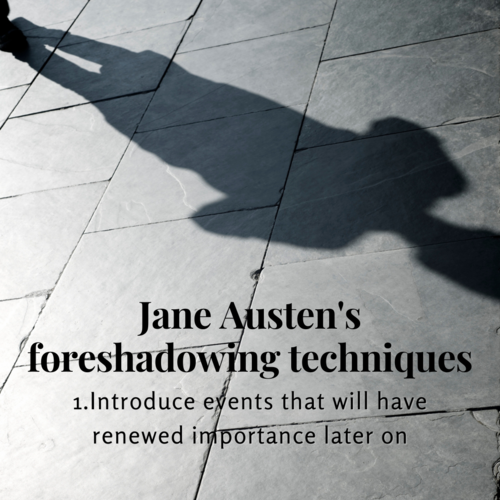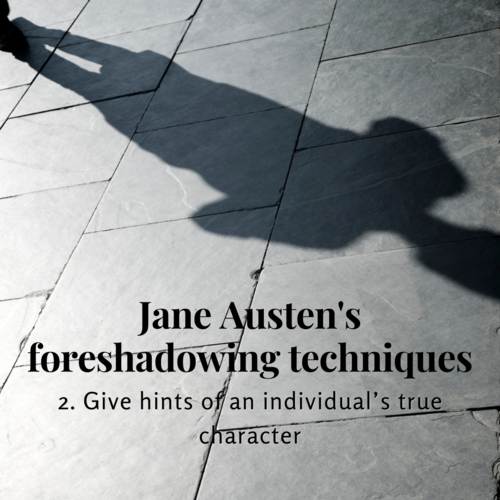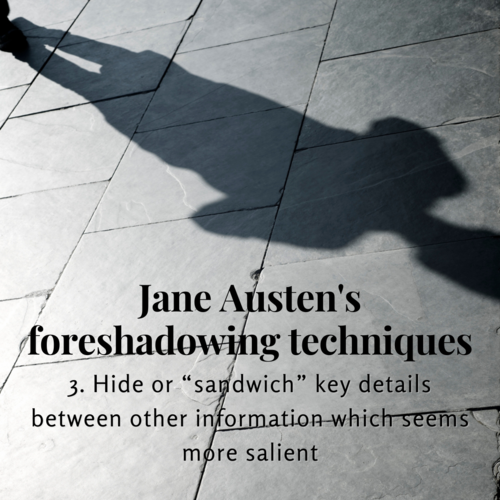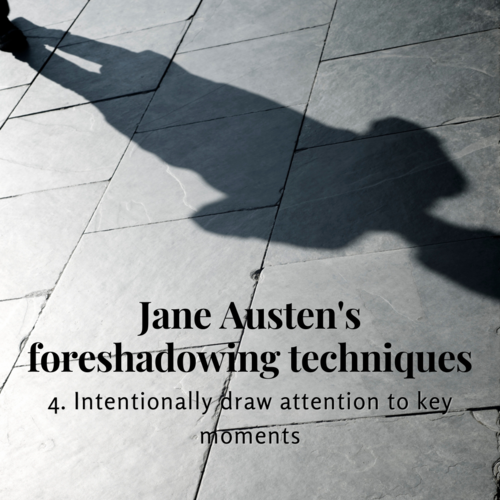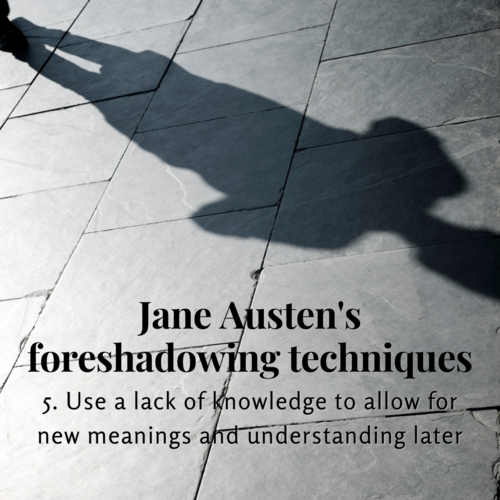#42: Use Large Discoveries and Plot Twists
Every Jane Austen novel has at least two or three large discoveries. These are grand reveals, surprise proposals, plot twists—these are moments when everything the character (and the reader) knows experiences a large shift or change. Sometimes these discoveries are unexpected for the reader, and other times, they are long hoped for by the reader (such as two favorite characters finally expressing their love to each other).
But how do you effectively write these grand discoveries? What are the essential elements?
The first element is something we discussed in the previous lesson: if there is a large discovery, there must be foreshadowing in advance. That way, even if the discovery is a surprise, it is believable and fits within the story world.
The next elements relate to the scene in which the discovery occurs. We’re going to discuss the biggest discoveries and plot twists that occur near the end of Jane Austen’s novel Emma. So prepare yourself for epic spoilers, which are necessary, or we can’t talk about how these scenes work.
The Sequence of Large Discoveries in Emma
Near the end of Emma, Jane Austen stacks four huge discoveries in a row, all near the climax of the book.
Here is the sequence of discoveries:
Discovery 1: Frank Churchill and Jane Fairfax have been secretly engaged for months.
Discovery 2: Harriet is not in love with Frank Churchill: she is in love with Mr. Knightley.
Discovery 3: Emma realizes that she herself is in love with Mr. Knightley and wants to marry him. (This discovery is one that is for the character and her character arc, but one that readers have likely suspected for quite some time.)
Discovery 4: Mr. Knightley loves Emma.
When I read Emma for the first time, I was completely surprised and blown away by the first discovery, that Frank Churchill and Jane Fairfax have been secretly engaged. I was not expecting it at all, and yet it was beautiful and horrifying and compelling and perfect and made me reconsider everything I’d read.
Other discoveries, like the third and fourth, I suspected, but that did not lessen the impact of these discoveries, because they are such key moments for the characters.
There is so much happening in each of these scenes, and they are well worth rereading. But each of these scenes contains a few core components. These are not always in the same order, and sometimes these components occur more than once within the same scene.
1. Advance signaling
Austen always builds up anticipation right before a large discovery—she gives advance signaling that there will be a large discovery.
Before Emma finds out about Frank and Jane’s engagement, Mr. Weston requests that Emma visit his house for news which only his wife can tell her, which sets off all sorts of warning signals in Emma’s head (she even worries that something has happened to her sister or brother-in-law or their children).
Before Harriet’s revelation, Emma notices that Harriet’s speech and mannerisms are not what she would expect:
It was indeed, so odd; Harriet’s behaviour was so extremely odd, that Emma did not know how to understand it. Her character appeared absolutely changed.
2. The Discovery Itself
The discovery itself is always expressed in a compelling way, whether it’s through someone’s speech, actions, events, or a combination.
When Emma discovers her own nature, her own feelings towards Mr. Knightley, we read:
Why was it so much worse that Harriet should be in love with Mr. Knightley, than with Frank Churchill? Why was the evil so dreadfully increased by Harriet’s having some hope of a return? It darted through her, with the speed of an arrow, that Mr. Knightley must marry no one but herself!
And when Mr. Knightley his love for Emma, we have some of the most romantic lines in the novel:
“I cannot make speeches, Emma. If I loved you less, I might be able to talk about it more….At present, I ask only to hear, once to hear your voice.”
3. Physical Reaction
A large discovery marks a huge shift of knowledge and understanding for a character. In cases like this, there is always some sort of physical reaction. Sometimes this is an internal reaction for the character (for example, a headache, stomach pain, etc.), and sometimes this is expressed in outward physical behavior (for example, speech, body language, movement, etc.).
After Mrs. Weston gives news of Frank and Jane’s engagement, we read:
Emma even jumped with surprise;–and, horror-struck, exclaimed,
“Jane Fairfax!—Good God! You are not serious? You do not mean it?”
Later, as Emma learns of Harriet’s true affections, we read:
[Emma] could not speak another word.—Her voice was lost; and she sat down, waiting in great terror till Harriet should answer.
4. Emotional Reaction
Large discoveries should always create an emotional reaction within the character, and as such, this emotion must be conveyed to the reader.
Emotions are conveyed throughout each of these four scenes in various ways. Here’s a passage that occurs after Emma’s discoveries of Harriet’s affection and of her own affections, which uses free indirect speech to convey emotion:
The rest of the day, the following night, were hardly enough for her thoughts.—She was bewildered amidst the confusion of all that had rushed on her within the last few hours. Every moment had brought a fresh surprise; and every surprise must be matter of humiliation to her.—How to understand it all! How to understand the deceptions she had been thus practicing on herself, and living under!—The blunders, the blindness of her own head and heart!—she sat still, she walked about, she tried her own room, she tried the shrubbery—in every place, every posture, she perceived that she had acted most weakly; that she had been imposed on by others in a most mortifying degree; that she had been imposing on herself in a degree yet more mortifying; that she was wretched, and should probably find this day but the beginning of wretchedness.
5. Reflection
Finally, large discoveries and twists demand further reflection from the character (which allows for reflection by the reader). This reflection is a chance for the character to consider the discovery in context, and to think about what this discovery means for the future.
A few minutes after the discovery of the hidden engagement, Emma reflects verbally on the discovery as she speaks to the Westons:
“Well,” said Emma, “I suppose we shall gradually grow reconciled to the idea, and I wish them very happy. But I shall always think it a very abominable sort of proceeding. What has it been but a system of hypocrisy and deceit,–espionage, and treachery?—To come among us with professions of openness and simplicity; and such a league in secret to judge us all!—Here have we been, the whole winter and spring, completely duped, fancying ourselves all on equal footing of truth and honour, with two people in the midst of us who may have been carrying round, comparing and sitting in judgment on sentiments and words that were never meant for both to hear.—They must take the consequence, if they have heard each other spoken of in a way not perfectly agreeable!”
After the final revelation—of Mr. Knightley’s love for Emma—we once again have Emma’s reflections:
What totally different feelings did Emma take back into the house from what she had brought out!—she had then been only daring to hope for a little respite of suffering;–she was now in an exquisite flutter of happiness, and such happiness moreover as she believed must still be greater when the flutter should have passed away.
Conclusion
Well-written discoveries can have a huge impact on characters, plot, and readers. When crafted with these five elements (advance signaling, the discovery, physical reaction, emotional reaction, and reflection) you can create powerful scenes that are satisfying to the reader. In the next lesson, which will be the final lesson on discovery, we will discuss using discovery to create satisfying story resolutions.
Exercise 1: Choose a large discovery that a character could have. First, write a character experiencing this discovery in a single paragraph, but still include all five elements: advance signaling, the discovery itself, physical reaction, emotional reaction, reflection. Now write a longer scene with a character experiencing this discovery, again using all five elements: advance signaling, the discovery itself, physical reaction, emotional reaction, reflection. What are the advantages and disadvantages of each version? Can you effectively tell the discovery both ways?
Exercise 2: Choose one of your favorite books that has been adapted to film. Rewatch and reread some of the scenes of discovery. How are the discoveries treated or expressed differently in book and the film?

